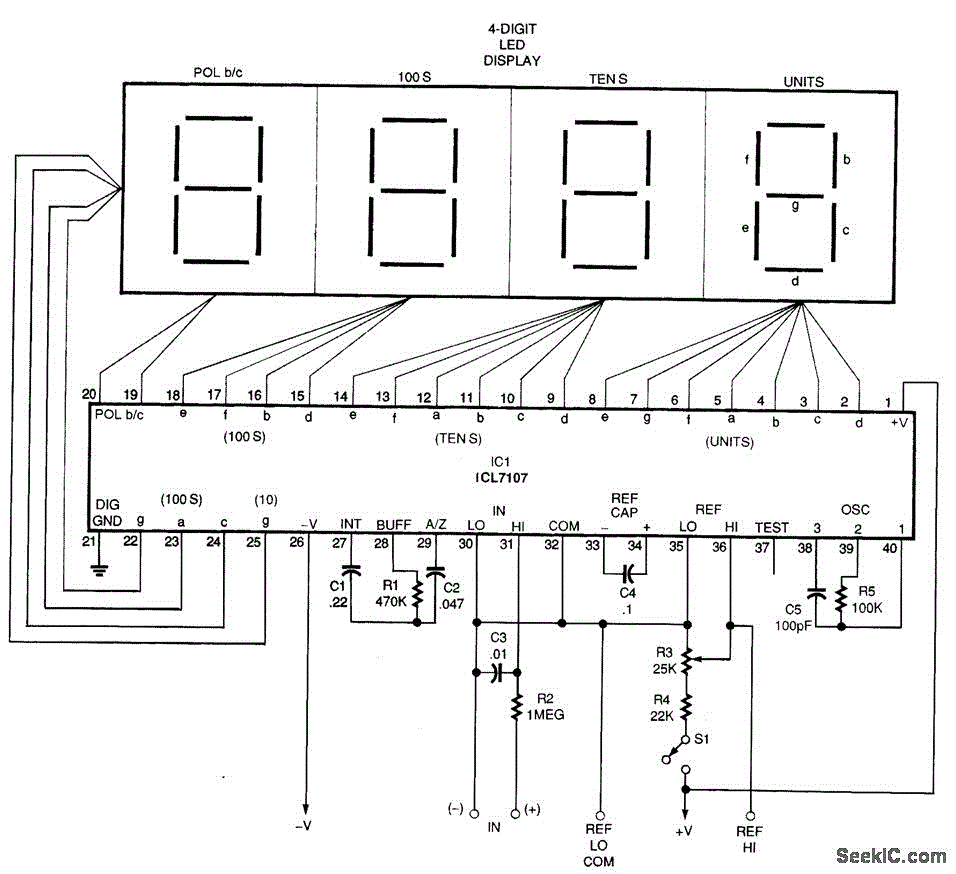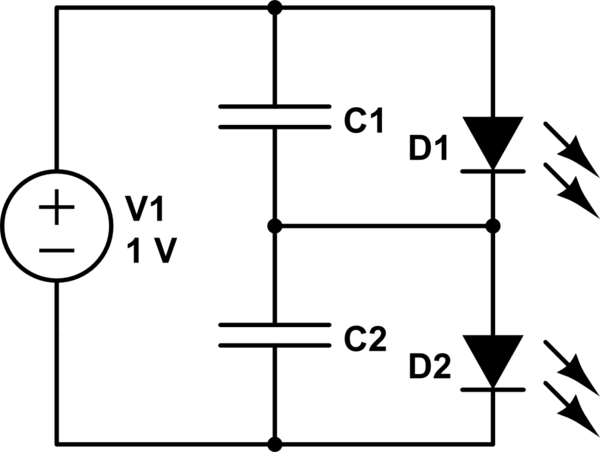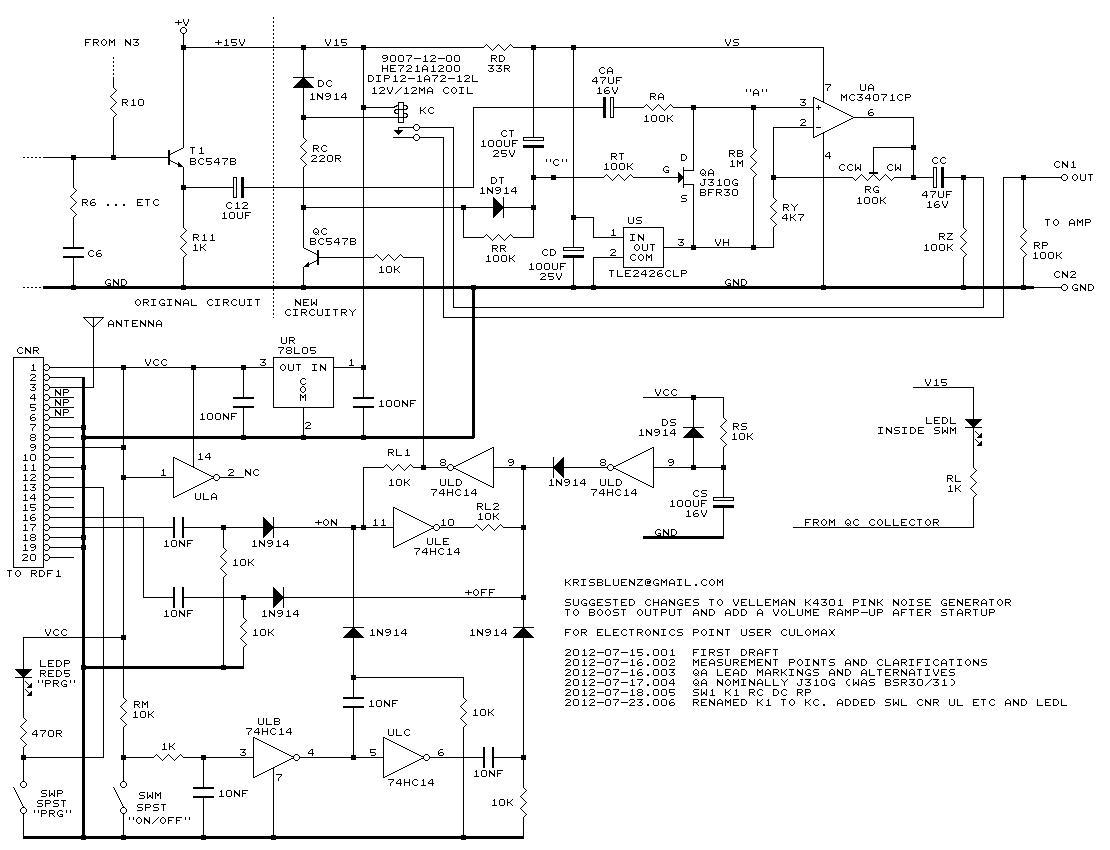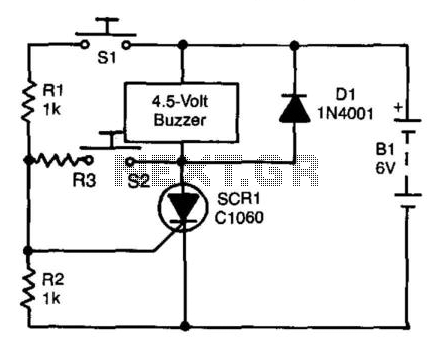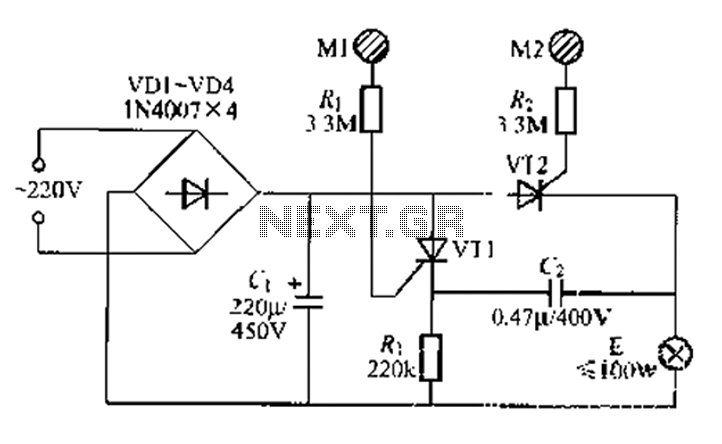
High pressure natural gas shutoff valve drive circuit diagram
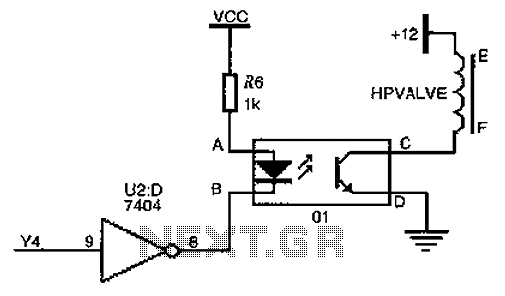
The driver circuit for the high-pressure natural gas shut-off valve utilizes solid-state relays. In dual-fuel mode operation, the fuel switching mechanism is controlled by a logic section that activates Y4 to a high state via U2 (7404 inverters). This causes point B (UB) to be low, while the surface potential at point A (UA) is higher than point B. Consequently, the input of the solid-state relay is energized, resulting in the activation of the output terminal. When connected, the output of the circuit applies a 12V working voltage to the solenoid valve (HPVALVE), allowing high-pressure natural gas to enter the engine after passing through the pressure reducer valve. If the logic section issues a command to close the electromagnetic valve, Y4 is set to low. After inversion, point B becomes high, and the potential at points A and B equalizes, preventing input current through the solid-state relay and deactivating the output terminal. The solenoid valve then returns to its normally closed position due to spring force.
The driver circuit for the high-pressure natural gas shut-off valve is designed to manage the flow of natural gas in a dual-fuel engine operation. The circuit employs solid-state relays for reliable switching, minimizing mechanical wear and improving response times. The operational logic is dictated by a series of inverters (U2, specifically 7404), which play a critical role in signal processing.
In the active state, when the fuel switching mechanism is engaged, the logic section outputs a high signal to Y4, which allows the solid-state relay to conduct. This conduction enables the output terminal to provide a 12V supply to the solenoid valve (HPVALVE). The solenoid valve is critical for controlling the gas flow into the engine, ensuring that it only receives gas that has been properly regulated by the pressure reducer valve.
The circuit's design incorporates fail-safe features. When the logic section determines that the electromagnetic valve should close, it sets Y4 to a low state. The inverter then processes this signal, resulting in point B being driven high. This change in state effectively cuts off current to the solid-state relay, deactivating the output terminal and allowing the solenoid valve to return to its default closed position, aided by a spring mechanism. This ensures that in the event of a fault or loss of control signal, the gas flow is automatically halted, enhancing safety during operation.
Overall, this circuit is a robust solution for managing high-pressure natural gas in dual-fuel applications, combining effective logic control with reliable solid-state switching to ensure safe and efficient operation. As shown for the driver circuit high pressure natural gas shut-off valve, the device 01 for the solid state relays. When the engine is in dual-fuel mode of operation, the opera tion of the fuel switching mechanism, the logic judging section instructs so Y4 1, is high by U2 (7404, inverters), the electric point B UB low, surface potential UA point a to point B than high, then the input of the solid state relay is turned on, the output terminal is also turned on. The output of CD Once connected, the solenoid valve HPVALVE ends will add 12V rated working voltage, high-pressure natural gas before the pressure reducer valve open, gas enters the engine under reduced pressure.
When the instruction issue logic portion of the electromagnetic valve is closed, Y4 0, after the inverter, B is high, UA UB, no input current through the solid state relay, the output terminal is not turned on, the solenoid valve recovery normally closed by the spring force.
The driver circuit for the high-pressure natural gas shut-off valve is designed to manage the flow of natural gas in a dual-fuel engine operation. The circuit employs solid-state relays for reliable switching, minimizing mechanical wear and improving response times. The operational logic is dictated by a series of inverters (U2, specifically 7404), which play a critical role in signal processing.
In the active state, when the fuel switching mechanism is engaged, the logic section outputs a high signal to Y4, which allows the solid-state relay to conduct. This conduction enables the output terminal to provide a 12V supply to the solenoid valve (HPVALVE). The solenoid valve is critical for controlling the gas flow into the engine, ensuring that it only receives gas that has been properly regulated by the pressure reducer valve.
The circuit's design incorporates fail-safe features. When the logic section determines that the electromagnetic valve should close, it sets Y4 to a low state. The inverter then processes this signal, resulting in point B being driven high. This change in state effectively cuts off current to the solid-state relay, deactivating the output terminal and allowing the solenoid valve to return to its default closed position, aided by a spring mechanism. This ensures that in the event of a fault or loss of control signal, the gas flow is automatically halted, enhancing safety during operation.
Overall, this circuit is a robust solution for managing high-pressure natural gas in dual-fuel applications, combining effective logic control with reliable solid-state switching to ensure safe and efficient operation. As shown for the driver circuit high pressure natural gas shut-off valve, the device 01 for the solid state relays. When the engine is in dual-fuel mode of operation, the opera tion of the fuel switching mechanism, the logic judging section instructs so Y4 1, is high by U2 (7404, inverters), the electric point B UB low, surface potential UA point a to point B than high, then the input of the solid state relay is turned on, the output terminal is also turned on. The output of CD Once connected, the solenoid valve HPVALVE ends will add 12V rated working voltage, high-pressure natural gas before the pressure reducer valve open, gas enters the engine under reduced pressure.
When the instruction issue logic portion of the electromagnetic valve is closed, Y4 0, after the inverter, B is high, UA UB, no input current through the solid state relay, the output terminal is not turned on, the solenoid valve recovery normally closed by the spring force.

